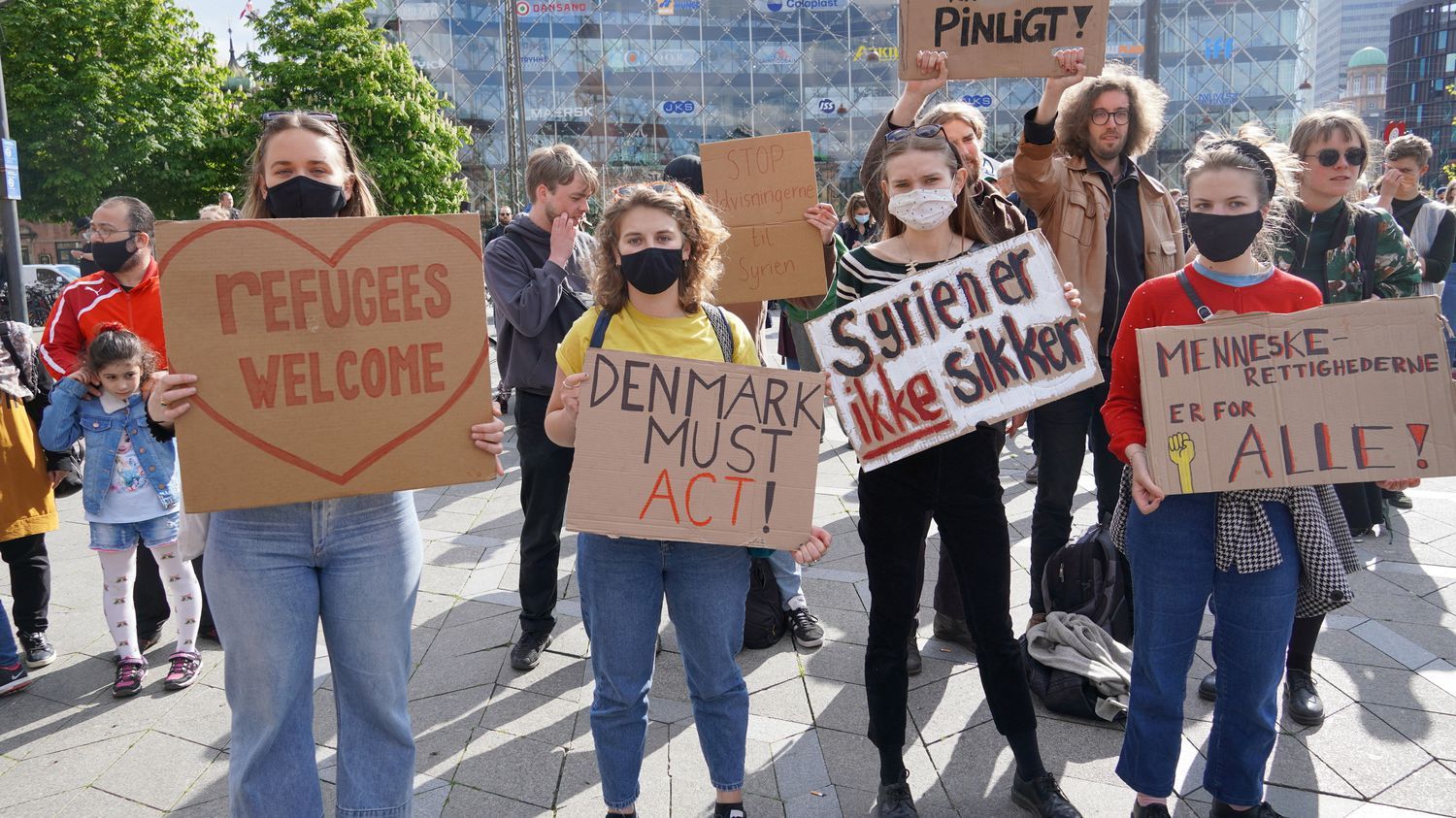In a significant move that underscores growing tensions within Europe over migration policies, Italy, alongside eight other European Union (EU) member states—Denmark, Poland, Austria, Belgium, Estonia, Latvia, Lithuania, and the Czech Republic—published an open letter on Thursday, urging a comprehensive reevaluation of how the European Convention on Human Rights (ECHR) is interpreted. Spearheaded by Italian Prime Minister Giorgia Meloni, the letter calls for a "new and open-minded conversation" about the ECHR, with a particular focus on its implications for migration management. This development reflects broader concerns about balancing human rights obligations with national sovereignty, especially as public sentiment across Europe increasingly sours toward irregular migration.
The European Convention on Human Rights: A Foundational Framework
The ECHR, which came into force in 1953, is a cornerstone of human rights law in Europe. Drafted in the aftermath of World War II, it was designed to protect fundamental freedoms and prevent the atrocities witnessed during the conflict. The convention, administered by the Council of Europe, enshrines rights such as the right to life, freedom from torture and degrading treatment, freedom of expression, prohibition of discrimination, and the right to family life. All 46 signatory countries, including the 27 EU member states, are legally bound to adhere to its provisions, with the European Court of Human Rights (ECtHR) in Strasbourg issuing enforceable rulings to ensure compliance.
The ECHR’s influence extends far beyond Europe, serving as a model for international human rights frameworks. However, its broad scope and the ECtHR’s evolving interpretations have sparked debates about whether the convention’s application aligns with contemporary challenges, particularly in the context of migration.
Historical Context and Evolution of the ECHR
The ECHR was born out of a post-war commitment to prevent the recurrence of human rights abuses. Its architects sought to create a binding legal framework that would hold states accountable for protecting individual rights. Over the decades, the ECtHR has expanded the convention’s scope through its rulings, a process known as "dynamic interpretation." This approach allows the court to adapt the convention’s principles to modern societal issues, such as gender equality, privacy in the digital age, and migration.
While this flexibility has enabled the ECHR to remain relevant, critics argue that it has led to judicial overreach. The nine signatory states contend that the ECtHR’s interpretations, particularly on migration-related cases, have sometimes extended the convention’s scope beyond its original intent, limiting national governments’ ability to enact policies that reflect domestic priorities.
The Migration Crisis and Political Shifts in Europe
The open letter comes at a time when Europe is grappling with significant migration challenges. According to the EU’s border agency, Frontex, irregular border crossings into the EU dropped by 38% to 239,000 in 2024, following a near-decade high in 2023. Despite this decline, migration remains a contentious issue, fueling the rise of hard-right political parties across the continent. Countries like Italy and Denmark, led by leaders with stringent migration policies, have faced increasing pressure to address public concerns about border security and integration.
The Political Backdrop: Hard-Right Gains and Public Sentiment
The surge in anti-immigration sentiment has reshaped Europe’s political landscape. In Italy, Giorgia Meloni, leader of the far-right Brothers of Italy party, has capitalized on public frustration with irregular migration to secure her position as prime minister. Similarly, Denmark’s Prime Minister Mette Frederiksen, despite leading a center-left government, has adopted a hardline stance on migration to counter the growing influence of populist parties. This convergence of political ideologies underscores the urgency of the open letter’s call for reform.
In other signatory states, such as Poland and Austria, right-wing parties have gained significant electoral ground by campaigning on stricter immigration controls. This trend reflects a broader shift in public opinion, with many Europeans expressing concerns about the economic, social, and cultural impacts of migration. The open letter can be seen as a response to these pressures, seeking to reconcile human rights obligations with the political realities of democratic governance.
Migration Policies and Legal Challenges
The letter highlights specific grievances with the ECtHR’s rulings on migration. For instance, the court has issued judgments against Latvia, Lithuania, and Poland for alleged unlawful treatment of migrants, including pushbacks at borders and inadequate asylum procedures. Denmark, meanwhile, was ordered to revise its family reunification policies, which were deemed overly restrictive under the ECHR’s right to family life provisions.
Italy, a frontline state in the Mediterranean migration route, has faced multiple ECtHR rulings criticizing its treatment of migrants. One of Meloni’s flagship policies—establishing migrant detention centers in Albania—has encountered significant legal hurdles. Italian judges have repeatedly blocked the detention of migrants intercepted at sea, citing potential violations of EU law and referring cases to the European Court of Justice (ECJ). The ECJ has yet to rule on these matters, leaving Italy’s policy in limbo.
Similarly, the United Kingdom, though not a signatory to the letter, has faced ECtHR challenges to its controversial plan to deport migrants to Rwanda. In 2022, the court issued an interim measure halting the first planned deportation flight, citing potential breaches of the ECHR. These cases illustrate the tension between national migration policies and international human rights obligations, a central theme of the open letter.
The Case for Reform: Balancing Rights and Sovereignty
The nine signatory states argue that the ECtHR’s interpretations have, in some instances, "extended the scope of the Convention too far," disrupting the balance between individual rights and state interests. The letter emphasizes the need to restore this balance to preserve democratic decision-making.
“We believe that the development in the Court’s interpretation has, in some cases, limited our ability to make political decisions in our own democracies,” the letter states.
This sentiment reflects a broader debate about the role of supranational courts in democratic systems. Critics of the ECtHR argue that its rulings sometimes override national parliaments, undermining the principle of subsidiarity—the idea that decisions should be made at the most local level possible. Proponents of the ECHR, however, warn that any attempt to limit the court’s authority risks eroding hard-won human rights protections.
Key Areas of Concern
The open letter identifies several areas where the ECtHR’s interpretations are seen as problematic:
Migration and Asylum Policies: The court’s rulings on migrant treatment, including detention conditions and border pushbacks, have constrained national governments’ ability to implement stringent migration controls. For example, the ECtHR has ruled against summary expulsions, requiring states to provide individualized assessments for asylum seekers, which can strain administrative resources.
Family Reunification: The right to family life under Article 8 of the ECHR has been a flashpoint, with countries like Denmark facing pressure to liberalize restrictive policies. The signatory states argue that such rulings limit their ability to set immigration quotas that reflect domestic priorities.
Judicial Overreach: The letter suggests that the ECtHR’s dynamic interpretation has led to rulings that go beyond the convention’s original intent, effectively creating new obligations for states. This has sparked accusations of "judicial activism," with governments calling for a more restrained approach.
Hidden Truths and Broader Implications
Beneath the surface of the open letter lies a complex interplay of political, legal, and social dynamics. The call for reform is not merely about migration but reflects deeper anxieties about sovereignty, globalization, and the role of international institutions in domestic governance.
The Sovereignty Debate
The push to reassess the ECHR is part of a broader trend of resistance to supranational authority. In recent years, several European countries have expressed frustration with EU institutions and international courts, viewing them as encroaching on national sovereignty. Brexit, for example, was driven in part by a desire to "take back control" from European judicial bodies, including the ECtHR and ECJ.
The open letter’s focus on the ECtHR’s interpretation of the ECHR aligns with this sentiment. By questioning the court’s authority, the signatory states are asserting their right to prioritize national interests, particularly on issues as politically charged as migration.
The Role of Public Opinion
Public opinion has played a pivotal role in shaping the debate over the ECHR. Surveys, such as those conducted by Eurobarometer, indicate growing public concern about immigration across the EU. In a 2023 survey, 24% of EU citizens identified immigration as one of the top two issues facing their country, up from 17% in 2019. This shift has empowered leaders like Meloni and Frederiksen to adopt tougher stances on migration, even at the risk of clashing with international human rights standards.
The open letter can be seen as an attempt to align legal frameworks with these shifting public sentiments. However, it also raises questions about the potential politicization of human rights, as governments seek to reinterpret universal principles to suit domestic agendas.
Research and Perspectives on ECHR Reform
Legal scholars have long debated the merits and drawbacks of the ECtHR’s dynamic interpretation. A 2020 study by the European Law Review argued that the court’s evolving jurisprudence has been essential in addressing modern challenges, such as climate change and digital privacy. However, the study also acknowledged criticisms that the court’s expansive rulings can create tensions with national governments, particularly on sensitive issues like migration.
Other research highlights the risks of reforming the ECHR. A 2022 report by the Council of Europe warned that limiting the ECtHR’s authority could undermine the convention’s effectiveness, potentially weakening protections for vulnerable groups, including migrants and asylum seekers. The report emphasized that the ECHR’s universal standards are critical for ensuring accountability, particularly in countries with weaker domestic human rights frameworks.
Potential Outcomes and Future Directions
The open letter marks the beginning of what could be a contentious debate about the future of the ECHR. Several potential outcomes could emerge from this initiative:
Reform of ECtHR Practices: The signatory states may push for changes in how the ECtHR interprets the convention, such as adopting a more restrictive approach to dynamic interpretation. This could involve clarifying the scope of certain rights, particularly those related to migration and family reunification.
Dialogue with the Council of Europe: The letter calls for a "new and open-minded conversation," suggesting that the signatory states are open to engaging with the Council of Europe and other stakeholders. This dialogue could lead to a compromise that balances human rights protections with national sovereignty.
Political Backlash: Any attempt to reform the ECHR is likely to face opposition from human rights organizations and other EU member states. Countries like Germany and France, which did not sign the letter, may advocate for preserving the ECtHR’s current role to prevent a weakening of human rights standards.
Challenges Ahead
Reforming the ECHR will not be straightforward. The convention’s universal nature means that any changes would require consensus among the 46 signatory states, a daunting task given their diverse political landscapes. Additionally, the ECtHR’s independence is a cornerstone of its credibility, and efforts to limit its authority could undermine public trust in the institution.
Moreover, the focus on migration risks overshadowing other critical areas of the ECHR, such as freedom of expression and protection against torture. A narrow reform agenda could inadvertently weaken the convention’s broader protections, with far-reaching consequences for human rights across Europe.
Conclusion
The open letter from Italy and eight other EU states represents a pivotal moment in the ongoing debate over the ECHR’s role in modern Europe. By calling for a reassessment of the convention’s interpretation, the signatory states are highlighting the challenges of balancing human rights with national sovereignty in an era of unprecedented migration and political polarization. While the letter reflects legitimate concerns about judicial overreach and democratic accountability, it also raises questions about the potential erosion of universal human rights standards.
As Europe navigates these complex issues, the outcome of this debate will have profound implications for the continent’s legal, political, and social landscape. Whether the call for reform leads to meaningful dialogue or deepens divisions remains to be seen, but it underscores the need for a nuanced approach that respects both the principles of the ECHR and the realities of contemporary governance.
















0 Comments